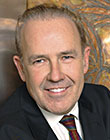The Need For SpeedAugust 9, 2023
By John TschohlThe Need For Speed
 John Tschohl is the founder and president of the Service Quality Institute —the global leader in customer service — with operations in more than 40 countries. He is considered one of the world’s foremost authorities on all aspects of customer service and has written several training programs, including “Speed,” which is also available in Spanish, Greek, Russian and Chinese. His monthly strategic newsletter is available online at no charge at www.customer-service.com. He can also be reached on Facebook, LinkedIn and Twitter.
John Tschohl is the founder and president of the Service Quality Institute —the global leader in customer service — with operations in more than 40 countries. He is considered one of the world’s foremost authorities on all aspects of customer service and has written several training programs, including “Speed,” which is also available in Spanish, Greek, Russian and Chinese. His monthly strategic newsletter is available online at no charge at www.customer-service.com. He can also be reached on Facebook, LinkedIn and Twitter.
“I feel a need for speed.”
Actor Tom Cruise made that line famous when he played Maverick, a fighter pilot, in the movie “Top Gun.” Unfortunately, most companies and employees don’t share that need. They don’t recognize the value of speed when it comes to attracting and retaining customers — and simply doing a good job, no matter the situation. As technology has increased the demand for speed in everything we do, it is critical to the success of businesses and employees that they deliver it.
Most companies throughout the world have set up roadblocks to speed. They’ve established rules, policies and procedures that handcuff employees in their dealings with customers. They don’t trust employees to make empowered decisions in order to satisfy customers and solve their problems because they think those employees will give away the store. What they don’t realize is that, when employees are empowered to solve customers’ problems, those customers will not only continue to do business with you, they will reward you with word-of-mouth advertising as they tell others about their experiences with your company.
Employees are also at fault for the lack of speed in businesses today. Their mindset is locked into “slow,” which means that, if you give them four hours or four days to complete a task, that’s exactly the amount of time they will take to do so. Whether they are dealing with external customers or internal customers, in the form of coworkers or management, they simply aren’t driven to complete things swiftly.
Employees should take these steps to increase speed:
Organize
Assemble everything you need to tackle a project or solve a problem so that everything is at your fingertips. Then, evaluate the time necessary to do what needs to be done.
Prioritize
Break the project down into a series of small steps. This will allow you to focus on the details while understanding the “big-picture” goals you must work toward.
Manage your time
Identify specific timelines you need to complete each section of the project and then work to meet — or beat — the time you have established to finish the entire project.
Recognize efficiency opportunities
Look for ways to incorporate your vendors or coworkers into projects early in the process. That means considering all the tools at your disposal, from the expertise of your coworkers to your organization’s technology assets.
Limit distractions
Every time you have a conversation at the water cooler or check your Facebook posts, you are getting off course, which can derail a project. That doesn’t mean that breaks aren’t important. Take short ones throughout the day to quickly recharge, maintain your creativity and stay ahead of fatigue.
Communicate
Provide coworkers and managers with appropriate updates on your progress and timetable. That not only illustrates the effectiveness of your use of speed, it demonstrates how you handle and overcome barriers. Constant communication forces you to think about the responsibilities of you and your team members and about how you can each maintain speed throughout the course of the project.
Keep promises and over deliver
When you do this, it shows your customers, coworkers and supervisors that you can be depended on to come through in a clutch. Over delivering allows you to further beat expectations by completing projects well ahead of the original schedule without compromising quality. Quality must go hand in hand with speed.
In the face of stiff and increasing competition from throughout the world, it’s critical that speed becomes a focus for everyone in your organization—from the CEO to frontline employees. If there is no commitment to making speed a priority, it will never happen. C&IT








